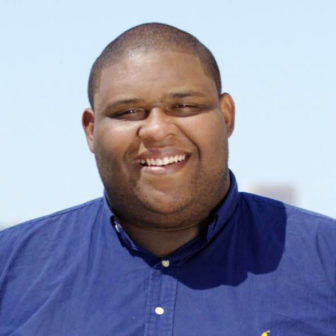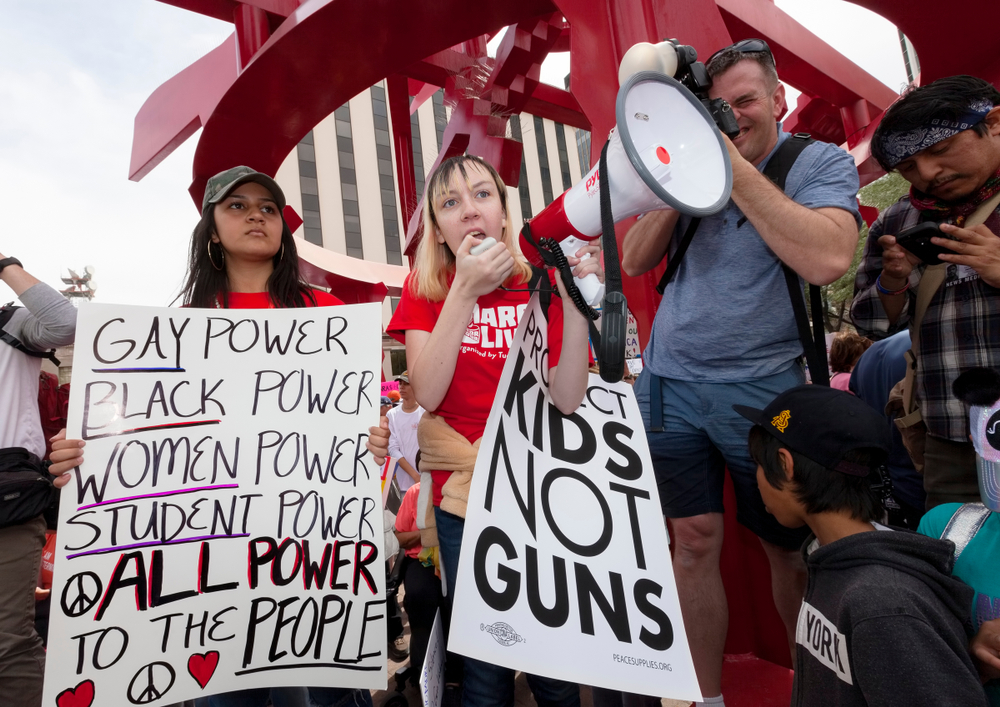![]() “He lifted up his shirt, and he pulled out the pistol. He laid it on my forehead, and was like, ‘Don’t you know I will kill you?’”
“He lifted up his shirt, and he pulled out the pistol. He laid it on my forehead, and was like, ‘Don’t you know I will kill you?’”
These are the words of Jerel Maddox, a former member of the Alabama-based dance team the Prancing Elites, featured on a TV show of the same name on the Oxygen network. In this episode, he struggles to describe what he calls, “the worst experience of his life,” the day his father pulled out a gun and ended up firing off several rounds inside of the house. Jerel recalls his father saying, “I wish you were the son I flushed down the toilet instead of getting your mom pregnant,” or saying Jerel is “less of a human” for being gay.

Jabari Lyles
Jerel’s story is one of many tales of hate, anger, pain and violence that lesbian, gay, bisexual, transgender and queer youth face daily. The same way this hate erupted into violence involving a gun for Jerel illustrates how easily this could happen for other LGBTQ youth. LGBTQ youth are targets for gun violence, but why have gun violence advocates left them out?
For more information on Youth Gun Violence Prevention, go to JJIE Resource Hub | Youth Gun Violence Prevention
According to a recent study on gun violence against LGBT people, nearly one-fifth of hate crimes are based on sexual orientation or gender identity bias, and sexual and gender minority students are more likely to be threatened with a weapon at school than heterosexual students. The same study found that 10% to 20% of LGB people report having attempted suicide at least once in their lifetime, and that more than half (51%) of all suicides in the U.S. are by firearm.
Many LGBTQ youth assuredly find themselves at the intersection of hate and bullying, family rejection and suicidal ideation. According to the Centers for Disease Control, LGB youth seriously contemplate suicide at almost three times the rate of heterosexual youth, and are almost five times as likely to have attempted suicide compared to heterosexual youth. Findings from the Family Acceptance Project show that LGB young adults who reported higher levels of family rejection during adolescence were 8.4 times more likely to report having attempted suicide.
According to the 2017 GLSEN National School Climate Survey, more than half of LGBTQ students (59.5%) reported feeling unsafe at school because of their sexual orientation and 4 in 10 students (44.6%) felt unsafe because of how they expressed their gender. LGBTQ youth have to contend with hate and hostility at home and in school.
Few questions were asked when Jordan Cofer, a 22-year-old trans man, was shot and killed by his brother during the mass shooting that occurred in Dayton, Ohio, earlier this year. Jordan was the very first person shot. And although those who were close to Jordan report he was not out to many as transgender, including his family, who knows to what extent his gender expression or nonconformity played a role in being a target of his brother’s violence.
Does anyone remember the killing of Letisha King? Letisha was a student at E.O. Green Junior High School in Oxnard, Calif., who was shot in the head twice by a fellow classmate, Brandon McInerney, a day after making flirtatious gestures. Many thought, including the jurors, McInerney was not guilty of a hate crime, and is furthermore possibly a victim of sexual harassment and bullying himself due to the unwanted advances from King. A mistrial was declared in the first trial.
At the second trial, McInerney was charged with second-degree murder, voluntary manslaughter and use of a firearm, but no hate crime. King’s death is another example of the outrageousness of the gay panic or trans panic defense, which seeks to justify violence if it is based on a reaction to someone’s gender identity or sexual orientation. This legal loophole makes seeking justice for hate-related crime in some states more difficult. Currently there are only eight states in the U.S. that have passed a ban to this defense, with a handful of other states attempting to push legislation through committee.
So far in 2019, 22 transgender people have been killed in the United States, an overwhelming majority black trans women, an overwhelming majority shot dead with a firearm. Looking upstream, due to discrimination against and dehumanization of transgender people, particularly transgender women of color, often the situations society forces trans people into make it inevitable they will have an experience with gun violence.
Black trans women in our country and around the world have to scrape through life on survival tactics. Many of these women are forced into sex work, forced to steal, forced into homelessness, forced into seroconversion, all to have a chance at life. It isn’t difficult, then, to draw a line from the predicament of sex work, theft or living on the street to being confronted with gun violence.
Here’s what must be done
If this type of hate and ostracization begins at a young age, why aren’t we discussing how LGBTQ youth are a particularly at-risk group to gun violence? The answer to this question might be the same answer to the many questions LGBTQ rights advocates have about this country’s legacy of inattention to the needs and experiences of LGBTQ people. Hate is still very real.
But what can be done? We must aggressively create a world where LGBTQ youth can truly believe they are safe. This goes beyond the typical safe space posters, stickers, trainings, videos and clubs. While these are all extremely important measures, measures that I work on each day, we must aim for LGBTQ youth to have lived experiences with safety.
LGBTQ youth deserve to live in a world where they truly feel and believe they are safe, rather than having to believe in the people working to make them safe. Right now, few districts across the country mandate teacher training on LGBTQ issues; have comprehensive policies on treatment of LGBTQ youth in juvenile detention facilities or child welfare programs; mandate LGBTQ-inclusive curricula, especially medically accurate sex education; have hate crime reporting laws, or have a ban on LGBTQ panic defenses.
These policies must be supported with plans for enforcement and testing, as well as ample opportunities for education, training and resources. Action on these items requires bold leadership. Leaders must be willing to take on the issue of LGBTQ youth head on.
Although gun violence is the primary topic here, LGBTQ youth are being left behind in nearly every system and facet of our society. Many of us sit idly by while we allow LGBTQ youth fall behind in education, housing, foster care, law enforcement, health and employment, to name a few. LGBTQ children are children with targets on their backs. Won’t you protect them?
Jabari Lyles is the LGBTQ affairs coordinator for Baltimore in the Office of Mayor Bernard C. “Jack” Young. With a background in teaching, nonprofit leadership, education policy and diversity training, Jabari is one of Maryland’s leading advocates for the LGBTQ community, particularly LGBTQ youth.
